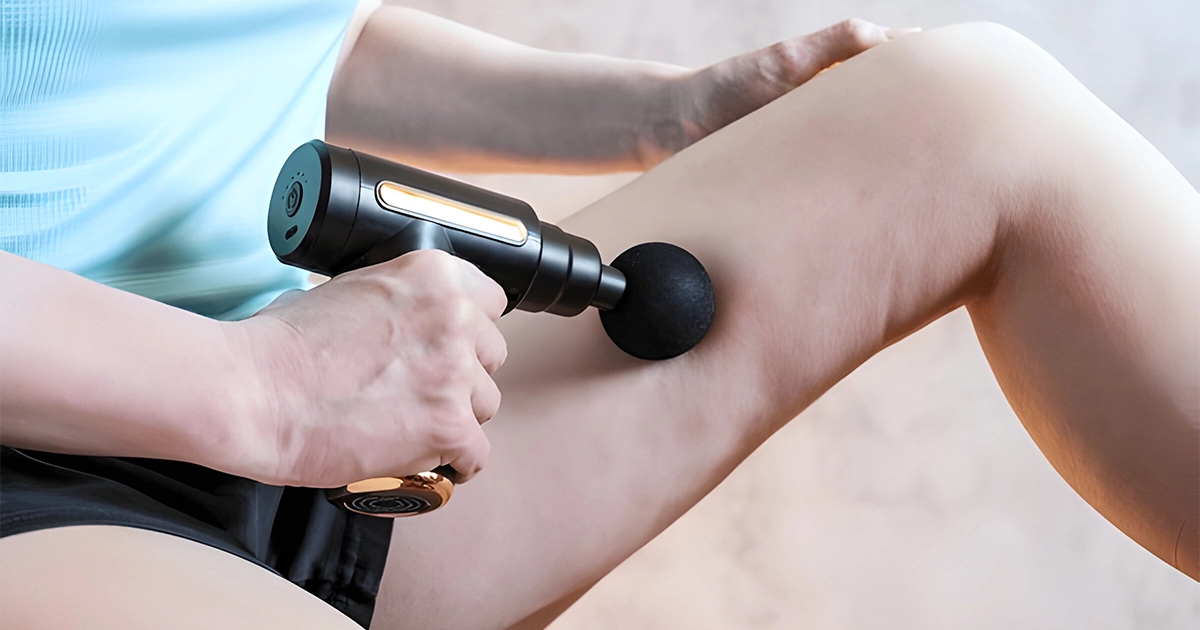When you perform an extreme workout, you experience muscle pain. This pain is expected and can be a sign that your muscles are growing stronger. The remaining soreness checks your ability to maintain a consistent exercise routine. There are different simple ways to ease your post workout muscle pain and enable quicker recovery. These ways will explore effective Strategies to reduce muscle soreness. It keeps you on track with your fitness goals.
Let’s start to learn the simple ways from here;
Hydrate for Recovery:
Drinking plenty of water is the simplest but most effective way to reduce muscle soreness. Water is vital in transporting nutrients to your muscles and removing metabolic waste. If you are not hydrated properly, it may cause late recovery and increase muscle pain. Drink at least 8-10 glasses of water regularly to avoid dehydration. If you have had an extreme workout session, then you should drink more water than this. Adding electrolytes to your water can help supply lost minerals and further aid muscle recovery.
Gentle Stretching:
Stretching is beneficial in reducing stiffness and promoting flexibility. It also increases blood flow to your muscles. You should add stretching exercises into your cool-down routine immediately after a workout. You should hold each stretch for 15-30 seconds by focusing on the major muscle group you have worked on. Regular stretching can be beneficial to reduce the risks of injury and save muscle tightness. Stretching is a crucial part of your post-workout recovery plan.
Massage and Foam Rolling
Painting muscle pain, improving blood circulation, massage therapy, and foam rolling are excellent techniques. A deep tissue massage is beneficial for breaking down knots and muscle tension, whereas foam rolling provides similar benefits at home. Use foam rolling at the sore area with moderate pressure to release muscle tightness. This self-myofascial release technique can significantly reduce muscle soreness and improve your range of motion.
Adequate Rest and Sleep
If you want to recover your muscles on time, Rest is a critical component of muscle recovery. When your body is in rest mode, your muscles repair and grow stronger. This is why getting enough sleep each night is essential. To support muscles and overall recovery, you should keep 7-9 hours for quality sleep. Additionally, include rest days into your workout routine to allow your muscles time to heal. Overtraining can lead to regular muscle soreness and increase the risk of injury, so listen to your body and rest when needed.
Ice and Heat Therapy
Spinning between ice and heat treatment can reduce muscle pain and rash. Applying ice packs to sore muscles for 15-20 minutes can help minimize swelling and numb pain. Follow this with heat therapy, such as a warm bath or heating pad, to relax tight muscles and improve blood flow. This combination can speed up healing and provide comfort from post-workout soreness.
Epsom Salt Bath
Bathing in an Epsom salt bath is soothing and helps ease muscle pain. Epsom salt contains magnesium sulfate, which is absorbed through the skin and helps reduce rash and muscle tension. Add two cups of Epsom salt to a warm bath and bathe for 20-30 minutes. Epsom salt bathing relieves muscle pain and promotes relaxation and stress relief.
Over the Counter Pain Relievers
Over-the-counter pain relievers such as ibuprofen or acetaminophen can provide temporary relief if your muscle soreness is harsh. These medications help reduce rash and pain, allowing you to stay comfortable while your muscles heal. However, use them sparingly and only as recommended. as overdosage can lead to side effects.
Proper Nutrition
A healthy diet is essential for muscle recovery. A balanced diet of protein, healthy fats, and carbohydrates provides the vital nutrients your muscles need to repair and grow. Protein, especially, is very adequate for muscle recovery. Include lean protein sources like chicken, fish, and eggs and plant-based options like beans and lentils. Foods rich in antioxidants and anti-inflammatory properties, such as berries, leafy greens, and nuts, can help reduce muscle inflammation and promote faster recovery.
Active Recovery
Doing low-intensity activities on rest days can help reduce muscle soreness and improve circulation. Activities such as walking, swimming, or yoga keep your muscles active without placing too much strain on them. This active recovery approach helps flush out metabolic waste and delivers fresh oxygen and nutrients to your muscles, aiding in faster recovery.
Listen to Your Body
Finally, the most important tip is to listen to your body. Everyone’s recovery process is different, and what works for one person may not work for another. Pay attention to how your body responds to various recovery methods and adjust accordingly. If you experience persistent or severe pain, it’s essential to consult a healthcare professional to rule out any underlying issues. Easing post-workout muscle pain doesn’t have to be complicated. Combining these simple yet effective techniques into your routine can reduce soreness, elevate faster recovery, and maintain a consistent workout schedule. Remember, recovery is just as important as the workout itself, so give your muscles the care they need to stay healthy and strong. Stay hydrated, stretch regularly, get enough rest, and nourish your body with the right foods to keep muscle pain at bay and achieve your fitness goals.
FAQs:
What is best for muscle recovery?
The best foods for muscle recovery after exercise should contain protein, carbohydrates, and healthy fats.
Do sore muscles burn calories?
Yes, sore muscles can burn calories. When you exercise, your body needs the energy to repair the muscle fibers damaged during your workout.
How to get rid of post-exercise pain?
One review found ice or heat therapy within 1 hour after exercise soothes muscle aches.

